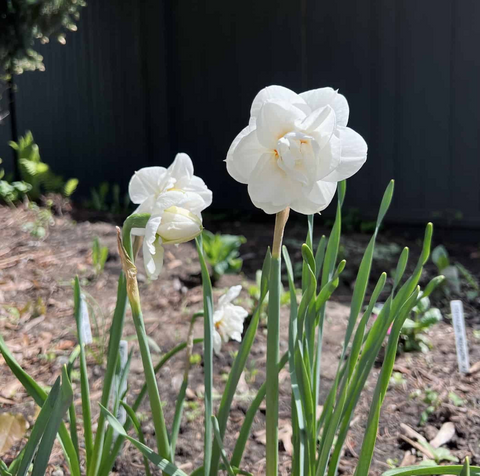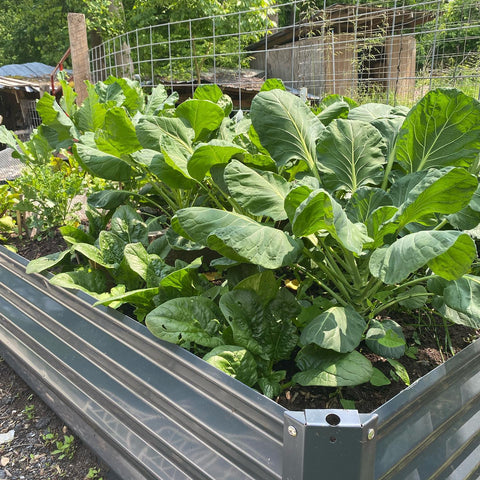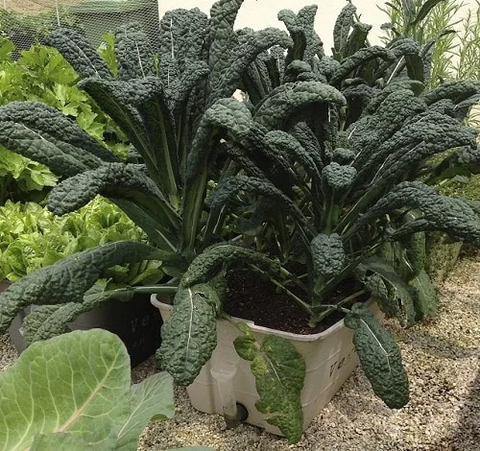In the realm of sustainable gardening, raised bed rain gardens emerge as an innovative and eco-friendly solution. As climate awareness grows, the need for water-wise practices becomes increasingly crucial. In this blog, we will explore the concept of raised bed rain gardens—how to create one for your gardening space and the multitude of benefits they offer for both your plants and the environment.

Creating a Rain Garden for Your Raised Bed
Materials Needed:
- Raised bed frame
- Gravel or crushed stone
- Topsoil or garden soil
- Mulch
- Native plants suited for rain gardens
- Rocks or boulders (optional)
- Permeable fabric or liner (optional)
Steps:
1. Select the Right Location:
Choose a location for your raised bed rain garden that receives runoff from roofs, driveways, or other impermeable surfaces. This ensures that the rain garden effectively captures and filters water. Consider the slope and drainage patterns in your garden when selecting the spot.
2. Prepare the Raised Bed:
Construct or prepare your raised bed in the chosen location. The raised bed will act as the container for the rain garden and help control the flow of water. Ensure the bed is well-built, level, and securely anchored to prevent erosion.
3. Create Infiltration Area:
Designate a section within the raised bed where water can infiltrate the soil. This can be achieved by leaving a portion of the bed uncovered or using permeable fabric to allow water to penetrate. This infiltration area helps water seep into the soil and replenish groundwater.
4. Add Gravel or Crushed Stone:
Place a layer of gravel or crushed stone at the bottom of the raised bed. This serves as a reservoir for excess water and aids in preventing soil erosion. The gravel layer also provides aeration for the soil, creating a healthier environment for plant roots.
5. Choose Native Plants:
Select native plants that are well-suited for rain gardens. These plants are adapted to local conditions and can thrive in both wet and dry periods. Examples include swamp milkweed, cardinal flower, and blue flag iris. Arrange the plants according to their water needs, placing those that prefer wetter conditions closer to the infiltration area.
6. Planting and Mulching:
Plant the selected native plants in the raised bed, ensuring they are well-spaced and have enough room to grow. Add a layer of mulch around the plants to help retain moisture, suppress weeds, and enhance the overall aesthetic of the rain garden.
7. Optional Features:
For added visual appeal and functionality, consider incorporating rocks or boulders into the rain garden. These elements not only contribute to the garden's design but also serve as erosion control measures. Additionally, you can install a permeable fabric or liner to further assist in water retention and prevent soil erosion.

Benefits of Raised Bed Rain Gardens
1. Water Conservation:
One of the primary benefits of raised bed rain gardens is water conservation. By capturing and utilizing rainwater runoff, you reduce reliance on traditional watering methods. This not only conserves water but also helps mitigate the impact of droughts on your garden.
2. Flood Prevention:
Raised bed rain gardens play a crucial role in flood prevention by absorbing and slowing down stormwater runoff. This helps prevent soil erosion and reduces the risk of flooding in your garden or surrounding areas. The gradual absorption of water by the soil also minimizes the strain on local stormwater infrastructure.
3. Improved Water Quality:
Rain gardens act as natural filters, trapping and filtering pollutants from stormwater runoff. The plants and soil in the rain garden work in tandem to remove sediment, nutrients, and contaminants, resulting in improved water quality. This has positive implications for local ecosystems and waterways.
4. Enhanced Soil Health:
The permeable nature of rain gardens facilitates better water infiltration, promoting healthier soil. The combination of gravel or crushed stone, soil, and organic matter creates a well-aerated environment that encourages robust root growth and microbial activity.
5. Biodiversity and Habitat Creation:
The selection of native plants in raised bed rain gardens contributes to biodiversity and habitat creation. Native plants attract pollinators, such as bees and butterflies, fostering a thriving ecosystem within your garden. This creates a harmonious balance that supports local wildlife.
6. Aesthetic Appeal:
Beyond their environmental benefits, raised bed rain gardens add aesthetic value to your garden space. The combination of carefully chosen native plants, rocks, and the natural flow of water creates a visually appealing landscape feature. Rain gardens can be designed to complement the overall theme of your garden.
7. Educational Opportunities:
Incorporating a rain garden into your raised bed offers educational opportunities for gardeners of all ages. It provides a tangible example of sustainable water management and environmental stewardship. Children and adults alike can learn about the interconnectedness of plants, water, and ecosystems.
8. Community Impact:
Implementing raised bed rain gardens in residential areas can have a positive community impact. It sets an example for neighbors, promoting sustainable practices and inspiring others to create their own rain gardens. This collective effort contributes to broader environmental awareness and resilience.

Maintaining Your Raised Bed Rain Garden
1. Regular Monitoring:
Keep a close eye on the health of the plants, the condition of the soil, and the overall water flow in the rain garden. Regular monitoring allows you to detect and address any issues promptly.
2. Weed Control:
While mulch helps suppress weeds, it's essential to keep an eye out for any invasive species that may try to establish themselves in the rain garden. Remove weeds as soon as they appear to prevent them from competing with native plants.
3. Mulch Renewal:
Periodically renew the layer of mulch in the rain garden. Mulch helps retain moisture, regulate soil temperature, and contribute to the overall aesthetics of the garden. Adding a fresh layer as needed ensures these benefits are maintained.
4. Pruning and Maintenance:
Perform regular pruning and maintenance of the plants in the rain garden. Trim back overgrowth and remove any dead or diseased vegetation. This not only enhances the garden's appearance but also promotes the health and vitality of the plant community.
5. Inspecting Infiltration Area:
Regularly inspect the infiltration area of the raised bed rain garden. Ensure that water is effectively seeping into the soil and replenishing groundwater. Address any issues with soil compaction or blockages to maintain proper drainage.
6. Community Engagement:
Consider engaging with your local community to share your experience with raised bed rain gardens. Hosting workshops or providing information about the benefits and design of rain gardens can inspire others to implement similar practices.
Conclusion
Raised bed rain gardens epitomize the harmonious integration of sustainable practices into the realm of gardening. From capturing and filtering rainwater runoff to creating a biodiverse habitat, these gardens offer a myriad of benefits for both your plants and the broader environment. Embrace the opportunity to transform your raised beds into eco-friendly havens, where the beauty of native plants meets the wisdom of water conservation. As you cultivate a raised bed rain garden, you not only nurture your plants but also contribute to the resilience and sustainability of our shared ecosystem. Happy gardening!









